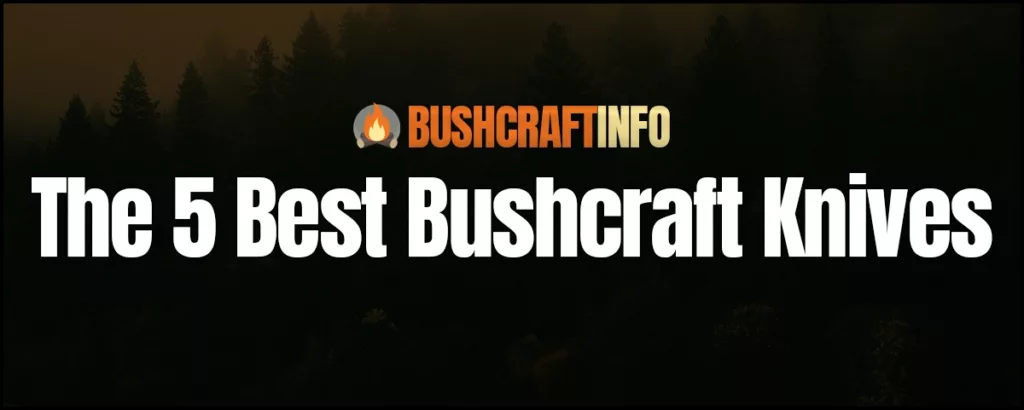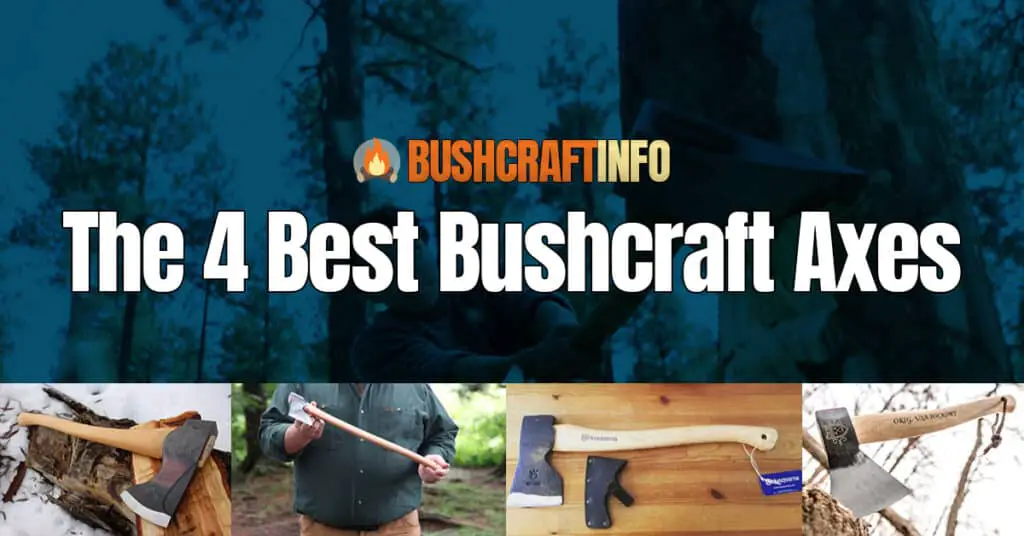Sharpening your bushcraft knife is one of the most essential skills to know. However, a lot of beginners may not know what angle to sharpen their bushcraft knives.
The sharpening angle of a bushcraft knife depends upon the angle of the cutting edge. It is usually half of the cutting edge angle. For instance, a knife with a 22-degree cutting edge will need to be sharpened at 11 degrees.
You might be wondering why we are talking half of the cutting edge angle as the sharpening angle. Well, it is because you need to sharpen the blade on both sides, therefore, each side will get half of the total angle.
However, there are a lot more things to know when it comes to knowing what angle to sharpen a bushcraft knife. Luckily, you have come to the right place because I have explained everything in detail below.
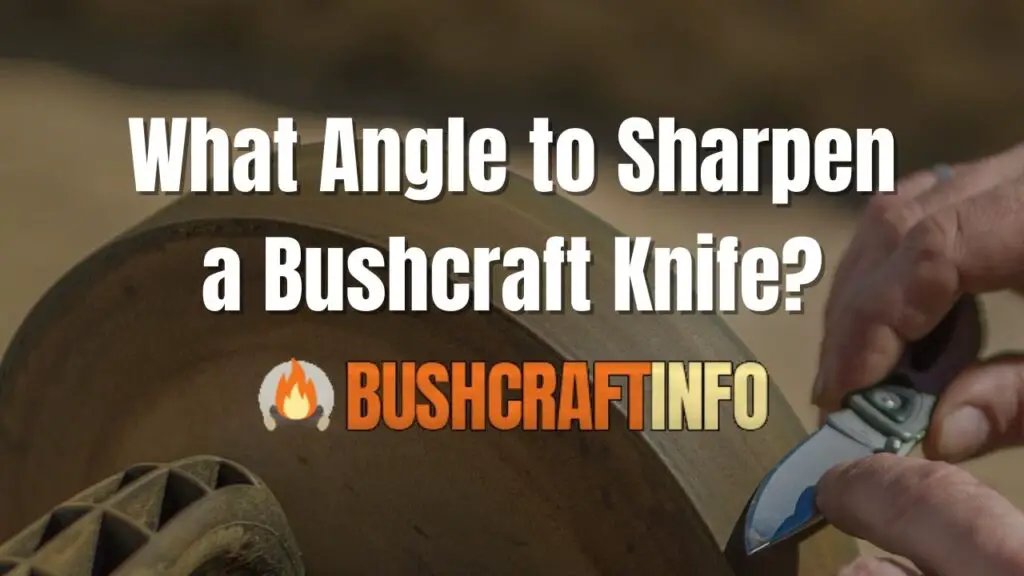
How Do You Know What Angle to Sharpen a Knife?
There are a few ways to find out the angle of the cutting edge of your knife.
The easiest way is to take a look at the blade itself. On one side, you will see the beveled edge and on the other side, you will see the spine of the blade. The angle between the beveled edge and the spine is the angle of your knife’s cutting edge.
If you don’t have a knife to measure, you can use a sharpie to draw a line on the blade at the angle that you want to sharpen it. You can also use a protractor or ruler to measure the angle.
Once you know the angle of your knife, it is important to use the same angle when sharpening it. If you don’t, you will end up with a blade that is not as sharp as it could be.
Once you have figured out the cutting edge angle of your blade. you need to divide the whole angle by two. The final output of this division will be the sharpening angle of your knife.
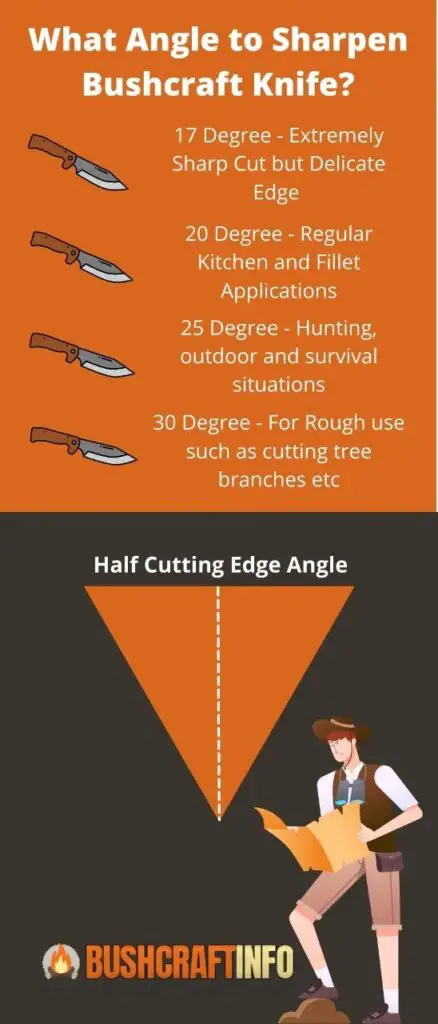
Does It Matter Which Direction You Sharpen a Knife?
Yes, it matters which direction you sharpen a bushcraft knife. You need to sharpen the blade in the same direction that it is cutting. If you sharpen it in the wrong direction, the blade will not be as sharp and it may also chip.
To be more specific, you will need to sharpen the knife in the direction of its bevel angle. Apart from that, the sharpening movement direction should start from the tip of the knife and end at the base near the handle of the knife.
How Do I Hold a Bushcraft Knife When Sharpening?
There is no one-size-fits-all answer to this question. The best way to hold a bushcraft knife for sharpening will depend on your skill level and the condition of the blade.
However, the most common way to hold a bushcraft knife is by gripping it from the handle with one hand and placing the other hand on the middle of the blade. This will give you more control over the blade and make it easier to sharpen.
What Methods Are Used for Sharpening a Bushcraft Knife?
There are three different methods for sharpening a bushcraft knife: grinding, honing, and stropping.
- Grinding is the most common way to sharpen a bushcraft knife. This involves using a sharpening stone to create a new edge on the blade.
- Honing is a less aggressive method of sharpening that can be used to maintain the edge of a blade.
- Stropping is the least common way to sharpen a knife, but it is still an effective method. It involves using a strap or piece of cloth to polish the edge of the blade.
What is the Best Way to Sharpen a Bushcraft Knife?
The best way to sharpen a bushcraft knife will depend on your skill level and the condition of the blade. If your knife is severely dull, then you will need to use a grinding method to sharpen it.
If the knife is only dulled, you can use a honing or stropping method to restore the edge. No matter which method you choose, it is important to be careful and take your time.
Why Is It Important to Sharpen Your Knife at the Correct Angle?
When you sharpen your knife at an incorrect angle, the blade will not be as sharp and it may also chip. If the blade is too sharp, it can easily cut through the material that you are cutting.
This is why it is important to use the correct angle when sharpening your knife. Apart from that, the sharpening angle of the blade will also determine its main usage.
There are a few different angles that can be seen in the following video. Each one of these sharpening angles will prepare the blade of the knife for its respective application.
What Should I Do if My Knife Slips While Sharpening?
If your knife slips while sharpening, you need to stop immediately and re-evaluate your grip on the blade. You may also need to adjust the sharpening angle so that you have more control over the blade.
Don’t try to continue sharpening if the knife is slipping out of your hands. It can be dangerous and may cause damage to the knife.
What Is the Difference Between a Sharpening Angle and a Bevel Angle?
The sharpening angle is the angle at which you sharpen the blade of the knife. The bevel angle is the angle of the blade itself. This is usually between 20 and 30 degrees, depending on the type of knife.
When you are sharpening your knife, it is important to use the same angle for both the sharpening and bevel angles. If you use different angles, it can cause damage to the blade and make it difficult to sharpen.
Should I Convert My 20-Degree Knives to 15 Degrees?
There is no one-size-fits-all answer to this question. If your knife is already sharpened to a 20-degree angle, then you do not need to convert it to a 15-degree angle.
The 15-degree angle is the most common angle for sharpening a bushcraft knife, but it may not be the best angle for your knife. You may need to experiment with different angles to find the one that works best for you.
What Is the Difference Between a Bushcraft Knife and a Kitchen Knife?
A bushcraft knife is designed for outdoor activities, such as camping, hiking, and hunting. It is a versatile tool that can be used for a variety of tasks, including cutting wood, preparing food, and self-defense.
A kitchen knife is designed for cooking and slicing food. It is not as versatile as a bushcraft knife and is not meant for outdoor activities. Most kitchen knives are usually bigger while bushcraft knives are usually compact in design and easy to carry.
Can I Sharpen My Bushcraft Knife as a Kitchen Knife?
The short answer to this question is no. You should never treat your bushcraft knife as a kitchen knife and attempt to sharpen it like a regular kitchen knife. It is because kitchen knives are mainly for cutting food items only.
Therefore, these types of blades are sharpened at a specific angle to meet kitchen requirements only. Whereas bushcraft knives are used for not only cutting food items but also for slaughtering and butchering hunted animals, clearing bushes, etc.
That said, the sharpening angle of bushcraft knives is a lot different than the regular knives used in homes and kitchens.
Tips for Sharpening Bushcraft Knives
Before I conclude, here are some tips that will help you sharpen your bushcraft knife more effectively:
- Use a quality sharpening stone to get the best results.
- Use the same angle for both the sharpening and bevel angles.
- Lubricate the blade with oil or water to help reduce friction.
- Use a slow, circular motion when sharpening the blade.
- Keep the sharpening stone wet at all times.
- Don’t use too much pressure when sharpening the blade.
- Inspect the blade regularly for chips and damages.
- Store the sharpening stone in a safe place when not in use.
Final Words
If you are new to bushcraft then knives are something that you need to master first. These tools are quite versatile and will help you in so many different situations. Apart from using a knife properly, maintaining a knife is also a pretty hard skill to master in the beginning.
You will need to master this by sharpening your blades whenever needed. But if you are just starting, then you might be confused and not know what angle to sharpen your bushcraft knife.
The sharpening angle of the knife depends upon the applications but generally, bushcraft knives are sharpened at half of the cutting edge angle. I hope you’ve enjoyed reading this article.
Please don’t forget to share it with your friends and family too on social media. Also, leave a comment below and share your own tips if you think I have missed something.
Was this post helpful?
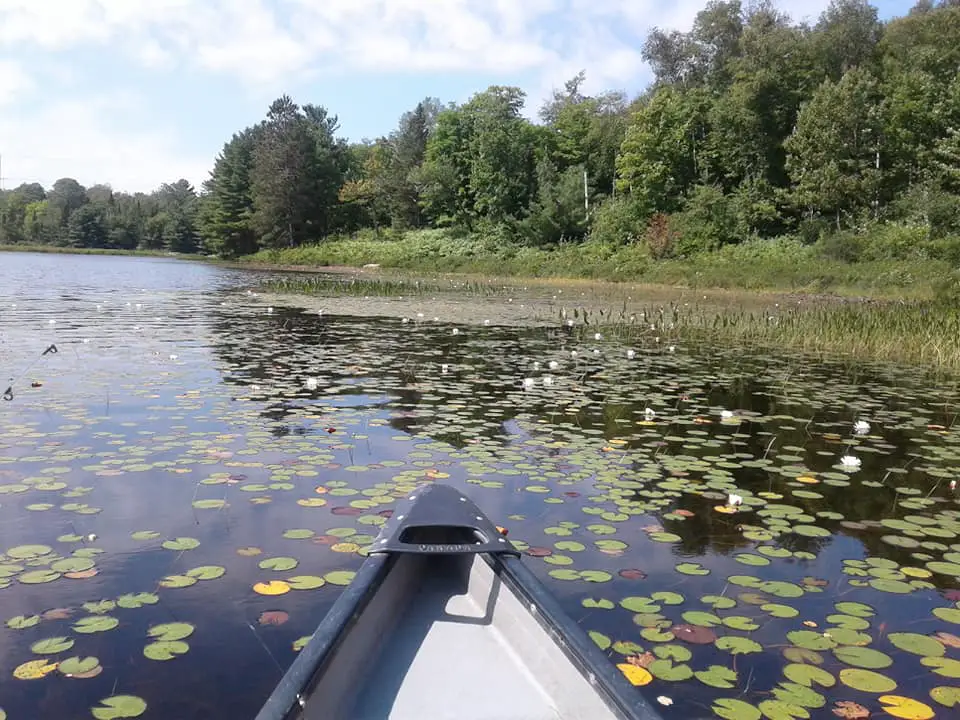
Hey I’m Josh! I have been practicing Bushcraft for a little over 6 years now! I Started this website to review awesome bushcraft gear that I love as well as share information I have learned along the way!

